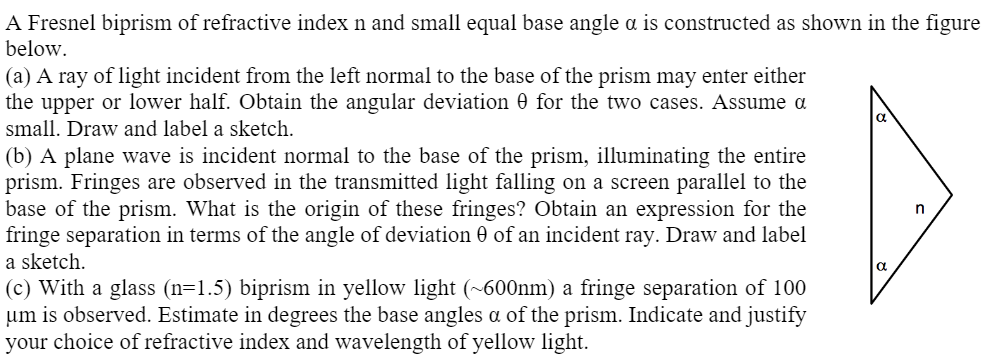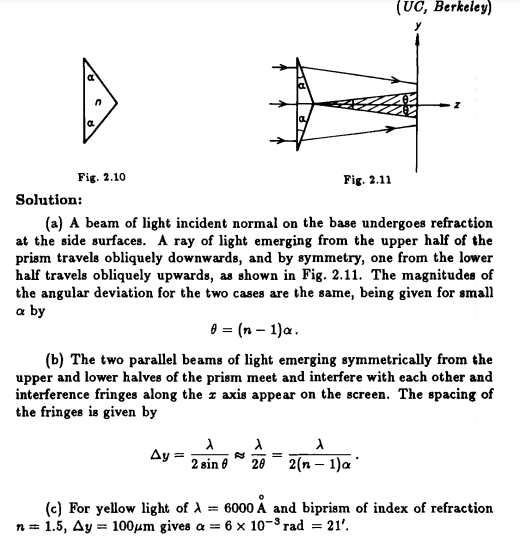How would I draw the sketch for part b? I have included the correct answers as a picture for this question, but I do not understand how to draw the sketch for part b.
How would I draw the sketch for part b? I have included the correct answers as a picture for this question, but I do not understand how to draw the sketch for part b.
Related questions
Question
100%
How would I draw the sketch for part b? I have included the correct answers as a picture for this question, but I do not understand how to draw the sketch for part b.

Transcribed Image Text:A Fresnel biprism of refractive index n and small equal base angle a is constructed as shown in the figure
below.
(a) A ray of light incident from the left normal to the base of the prism may enter either
the upper or lower half. Obtain the angular deviation 0 for the two cases. Assume a
small. Draw and label a sketch.
(b) A plane wave is incident normal to the base of the prism, illuminating the entire
prism. Fringes are observed in the transmitted light falling on a screen parallel to the
base of the prism. What is the origin of these fringes? Obtain an expression for the
fringe separation in terms of the angle of deviation 0 of an incident ray. Draw and label
a sketch.
n
a
(c) With a glass (n=1.5) biprism in yellow light (~600nm) a fringe separation of 100
um is observed. Estimate in degrees the base angles a of the prism. Indicate and justify
your choice of refractive index and wavelength of yellow light.

Transcribed Image Text:(UC, Berkeley)
Fig. 2.10
Fig. 2.11
Solution:
(a) A beam of light incident normal on the base undergoes refraction
at the side surfaces. A ray of light emerging from the upper half of the
prism travels obliquely downwards, and by symmetry, one from the lower
half travels obliquely upwards, as shown in Fig. 2.11. The magnitudes of
the angular deviation for the two cases are the same, being given for small
a by
0 = (n – 1)a.
(b) The two parallel beams of light emerging symmetrically from the
upper and lower halves of the prism meet and interfere with each other and
interference fringes along the z axis appear on the screen. The spacing of
the fringes is given by
Ay =
2 sin 8
20
2(n – 1)a
(c) For yellow light of A =
n = 1.5, Ay :
6000 À and biprism of index of refraction
100um gives a = 6 x 10-3 rad = 21'.
Expert Solution
This question has been solved!
Explore an expertly crafted, step-by-step solution for a thorough understanding of key concepts.
Step by step
Solved in 2 steps with 1 images
